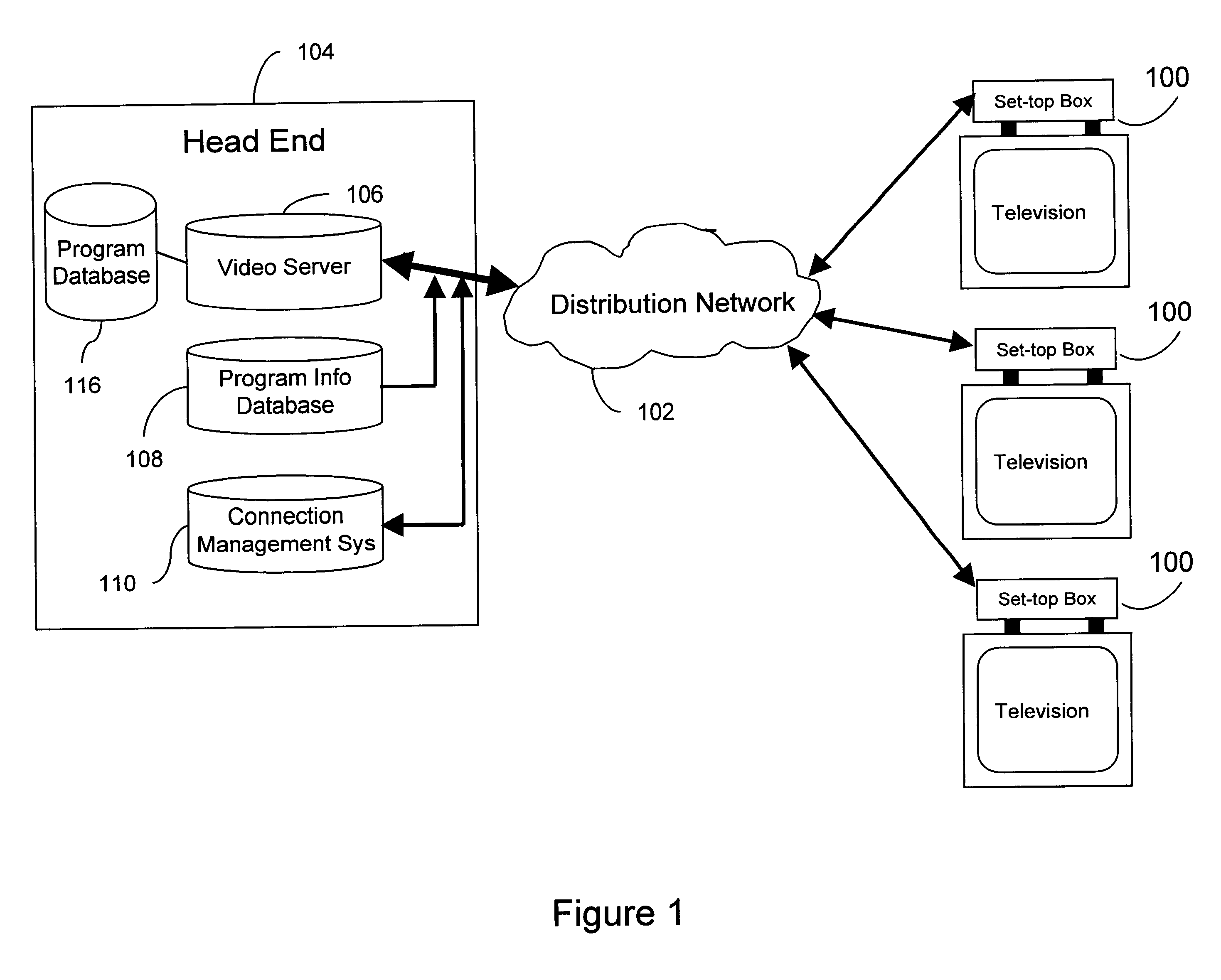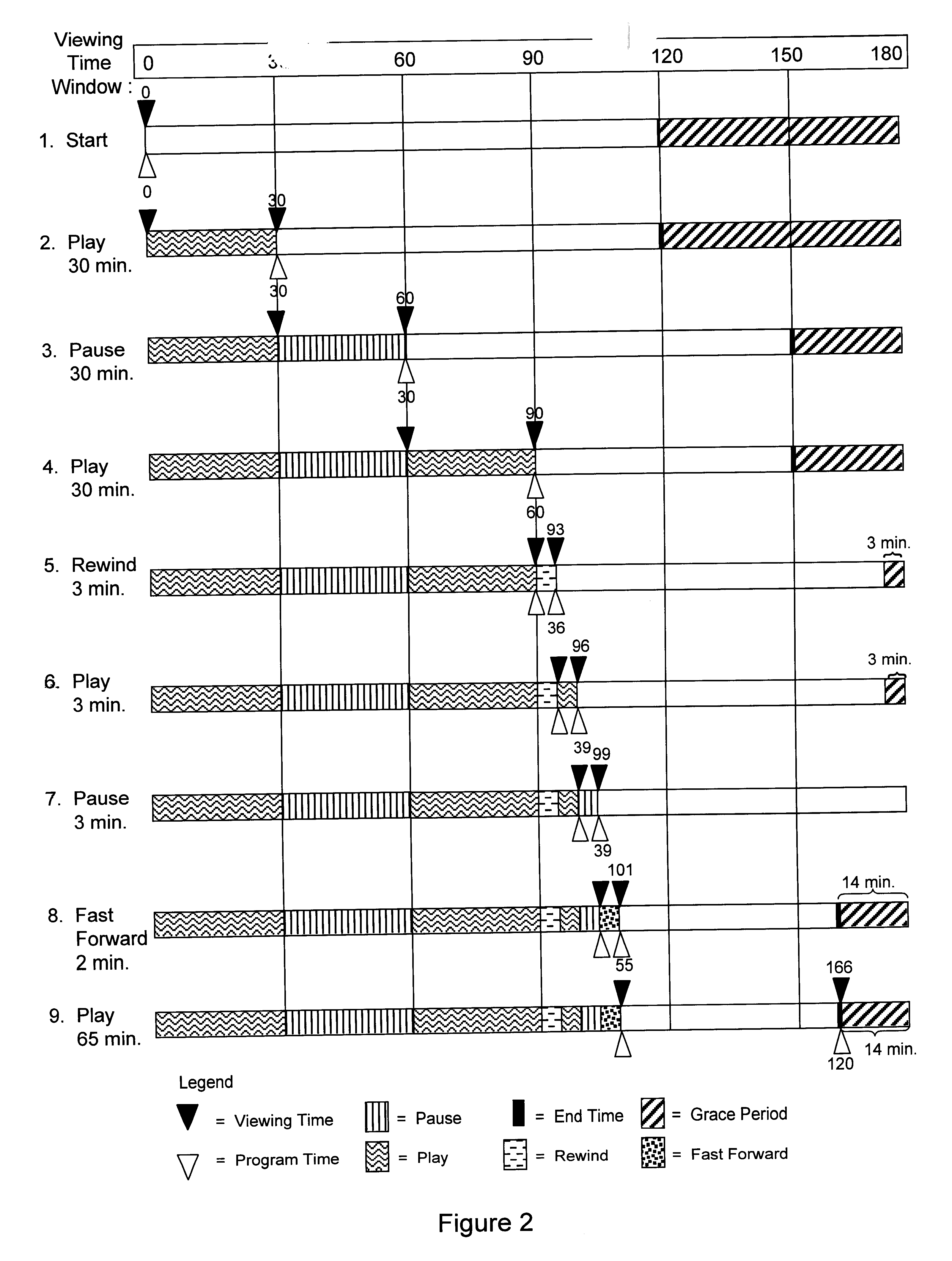Method and system for providing interactive media VCR control
- Summary
- Abstract
- Description
- Claims
- Application Information
AI Technical Summary
Benefits of technology
Problems solved by technology
Method used
Image
Examples
Embodiment Construction
The following example illustrates how the present invention tracks the effects of VCR control and limits the VCR control through the course of a program showing. FIG. 2 traces the playing of a 2 hour movie within a 3 hour viewing time window (with the multiplier M equal to 1.5). The viewing time window is shown at the top of FIG. 2, spanning 0 to 180 minutes. Under the viewing time window, the series of bars represents sequentially applied VCR commands. On each bar, the number above the bar next to the black triangle indicates the viewing time elapsed (VT.sub.E) in minutes, while the number below the bar next to the white triangle indicates the time stamp (TS) in minutes of the movie. Each patterned region of the bars represents the duration a VCR command is applied. Finally, the patterned region at the end of the bars, between the heavy vertical line (representing the end of the movie) and the end of the bar, represents the time remaining for VCR control, which this application ref...
PUM
 Login to View More
Login to View More Abstract
Description
Claims
Application Information
 Login to View More
Login to View More - R&D
- Intellectual Property
- Life Sciences
- Materials
- Tech Scout
- Unparalleled Data Quality
- Higher Quality Content
- 60% Fewer Hallucinations
Browse by: Latest US Patents, China's latest patents, Technical Efficacy Thesaurus, Application Domain, Technology Topic, Popular Technical Reports.
© 2025 PatSnap. All rights reserved.Legal|Privacy policy|Modern Slavery Act Transparency Statement|Sitemap|About US| Contact US: help@patsnap.com



